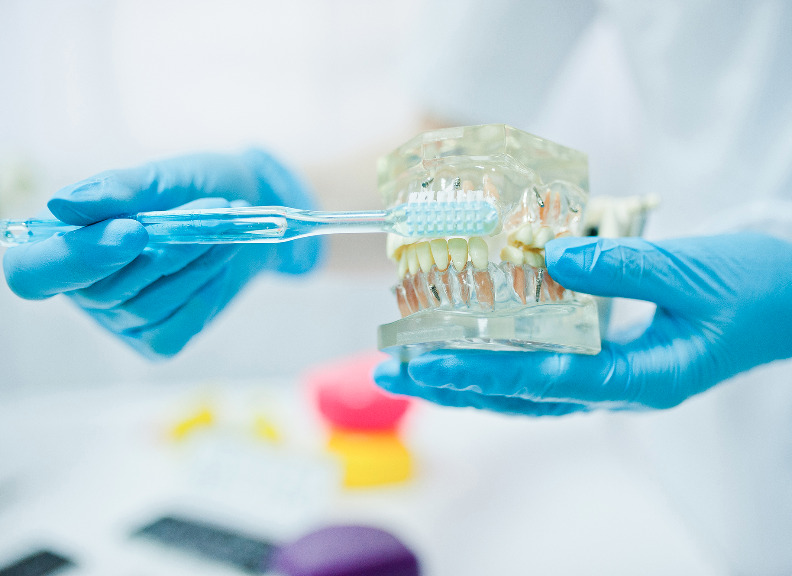Research
Biomaterials and nano-dentistry
Translating biomaterials and nanotechnology research to clinical dentistry
The research program at the Biomaterials and Nano-Dentistry research group at UWA is multidisciplinary in nature. Our main aim is to translate biomaterials and nanotechnology research to clinical dentistry for providing better dental treatment to patients. The program’s current research focuses on drug-delivery to dental tissues through nano-carriers for preventive & restorative therapies; bioengineering of dental hard tissues, the interaction of high intensity focused ultrasound with tooth structure; and 3D bio-printing for dental tissues repair.
- Establishing a novel platform for drug delivery to dentin-pulp complex using drug-loaded nano-carriers for potential dental restorative and preventive applications.
- Bioengineering of dental hard tissues for improving the biodegradation properties.
- Optimising the bonding of restorative materials to tooth structure and formulation of future dental adhesive systems.
- Bio-remineralisation of dentin and resin/dentin hybrid layer for enhancing the clinical durability of resin-dentin bonded restorations.
- Fabrication of 3D scaffolds through Electro-hydrodynamic jet (e-jet) printing for dental tissues repair.
- The interaction between dental hard tissue and the high intensity focused ultrasound (HIFU) as an alternative tool for dental tissues manipulation.
- Enhancing the performance of tooth-coloured restorative materials through chemical modifications.
- Investigating the potential of human dentin as natural scaffold for osteogenic and odontogenic stem cell differentiation.
Research Program Lead: Dr Amr Fawzy
Projects
The current and proposed research program at the Biomaterials and Nano-Dentistry research group can be categorised under four main areas:
- Drug-delivery to dentin-pulp complex using nano-carriers
-
We previously introduced a new approach for drug-delivery to demineralized dentin-substrates through the micro-sized dentinal-tubules in the form of drug-loaded nanocapsules/nanoparticles for several potential dental applications. It is well known that human dentin represents the main bulk of tooth structure and it is in direct anatomical and functional connection with dental pulp forming what is known as “dentin-pulp complex”.
Human dentin is an avascular mineralized tissue that contains micro-sized dentinal tubules (DT) which form 3D capillaries system. Dentinal tubules run continuously from the dentino-enamel junction (DEJ) to the pulp chamber in coronal dentin, and from the cementum-dentin junction (CEJ) to the pulp canal(s) in the root dentin. Dentin was described as a porous biologic composite made up of apatite crystal filler particles in a collagen-matrix. The average diameters of dentinal tubules range from 1-2 µm depending on proximity to the pulp, age, maturation, and carious activity or other stimuli.
Dentinal tubules main branches are connected through many lateral smaller branches creating complex 3D capillaries system. This capillaries system is filled with water-based tissue fluid called dentinal fluid which flow from the pulp direction upward under the effect of the pulpal hydrostatic pressure. The fluid contents of the dentin tubules capillaries systems are connected to the fluid contents of the nano-sized collagen inter-fibrils spaces of the intertubular dentin, which might provide an alternative route for drug delivery to the avascular demineralized intertubular dentin collagen-matrix. In this research project, we are aiming to take this new drug-delivery platform further to explore its potential to be translated to clinical dentistry.
- Bioengineering of dental hard tissues for therapeutic and preventative dental applications
-
In the last few years we intensively investigated different biomodification/bioengineering protocols aiming to enhance the biodegradation resistance and to preserve the structural integrity, chemical and mechanical stability of dentin collagen substrates through various crosslinking agents and/or MMPs inhibitors such as photo-activated riboflavin compounds, proanthocyanidins, chitosan and surface functionalized nanoparticles for potential applications in restorative, preventive and regenerative dentistry. Our future aim is to translate these collagen-reinforcement protocols into a product that could be used by the clinicians within expectable clinical protocols.
- The interaction of HIFU and dental hard tissues
-
The potential cleaning and removal effect of high intensity focal ultrasound “HIFU” on E. oral biofilms was previously investigated. However, rough mineralized dentin surfaces were produced after HIFU interaction with hard tooth structure. The results of surface characterization of the HIFU-treated dentin surfaces in terms of chemical composition, mineralization status, micro/nano-topography and surface mechanical properties encourage me to consider HIFU-treated dentin as a bonding substrate for resin-dentin bonded restoration.
In current adhesive dentistry we acid-demineralizes or condition the dentin surface to allow resin infiltration and hybrid layer formation. However, during this routine step in adhesive dentistry we create problems such as exposing the collagen fibrils and trigger MMPs and other enzymes which contribute significantly in the degradation of the bonded interfaces and subsequent restoration failure. As a new concept in adhesive dentistry, through HIFU treatment a rough mineralized dentin surface with high surface energy (able to be wet with more hydrolytically stable hydrophobic resins) could be achieved with clinically acceptable frame and HIFU parameters.
HIFU is different from common ultrasound used in many dental applications as HIFU creates localized mechanical shock wave and cavitation leading to intense localized and controlled mechanical ablation of the targeted surface. However, this new concept needs intensive investigation to prove efficiency and also needs collaborative work with biomedical engineers, biomaterials scientists and clinicians if will be considered for further clinical investigations and applications.
- 3D-printing of biomaterials scaffolds for dental tissues repair
-
Being a novel scaffolding approach, 3D “Bioprinting” has advantages over other material processing techniques for tissue engineering and repairs, due to its reproducibility and controllability. 3D-printed scaffolds are capable to mimic the complex 3D micro-environment of native tissues, and have shown promising outcomes in the biomedical applications. In this research program we aim to print dentin-like scaffolds which could be used in various therapeutic and preventive dental applications.
- Milled and 3D printed dental prosthetic appliances
-
This research involves the investigation of the performance and clinical applications of machined, milled and 3D printed non-metallic denture base materials.





































